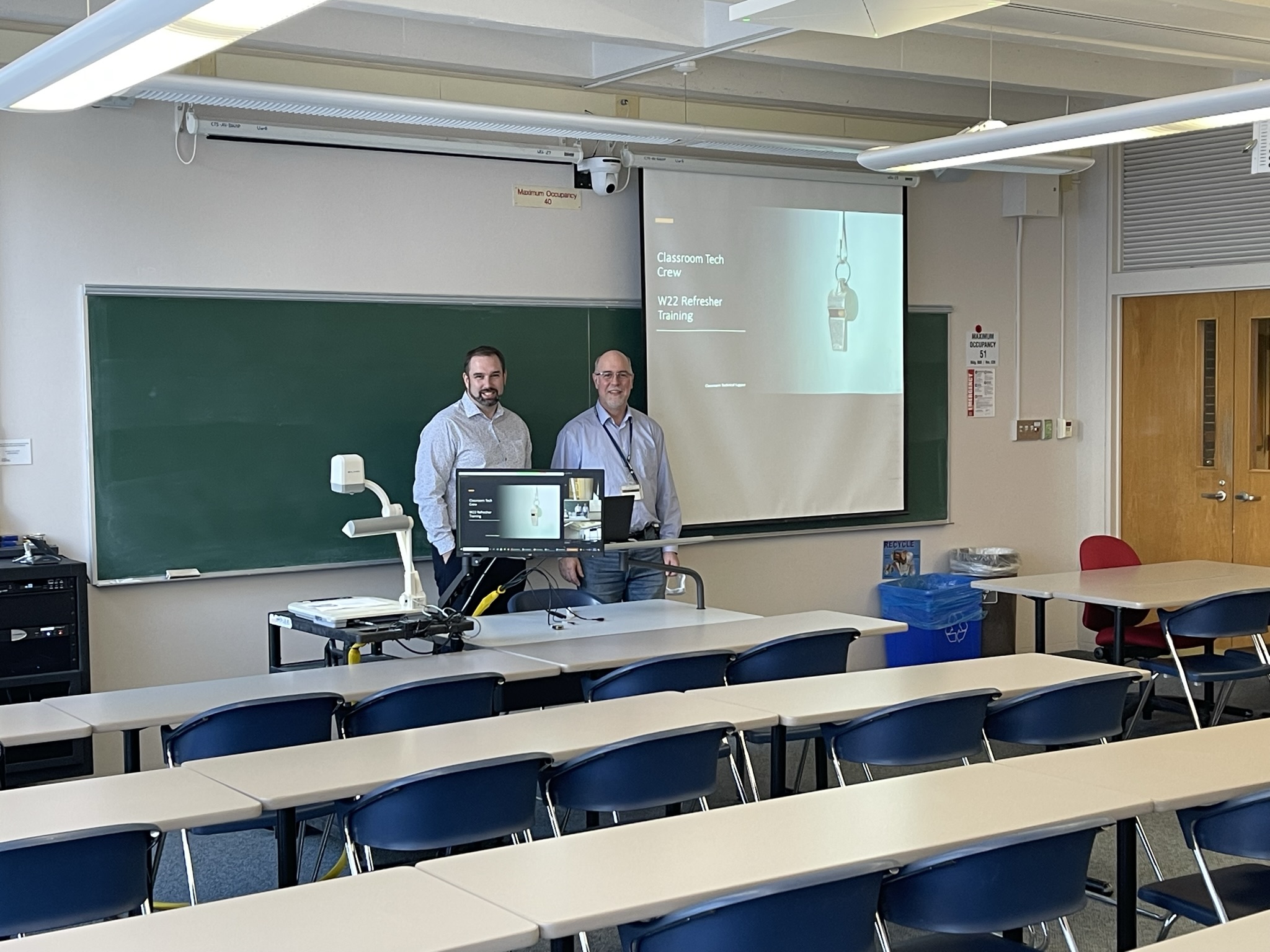GOALS
University of Guelph: Christopher Hewitt, manager, classroom technical infrastructure, and Steve Borho, manager, classroom design and planning at University of Guelph believed that because of COVID-19 restrictions, not all students would return to face-to-face learning immediately when the campus reopened. "In the face of this, we felt it would be necessary to implement synchronous online and hybrid teaching technology in our classrooms."

CHALLENGES
The University of Guelph has a BYOD model in our classrooms with no classroom computers. Professors bring in a plethora of different laptops—from economical, consumer-grade laptops to high-end production workstations. Our challenge was to install classroom web conferencing with easy connection.
Our classrooms were well equipped and well liked by professors, and we did not want to break that good working relationship by radically changing the technology. The web conference functionality needed to be added to the classroom technology package in a way that allowed the rooms to still be used as they were pre-COVID-19.
During the initial COVID-19 pivot we converted some seminar rooms to simple lecture studios using a laptop docking station, an extra monitor, a webcam, and a USB document camera. These were to accommodate professors who did not have a home or office environment conducive to teaching. We leveraged the knowledge gained from this to plan web conference lecture theaters for the fall 2020 semester, which would include a PTZ camera, AV bridge, and a tie into the room wireless mic and sound system. Unfortunately, due to supply delays, we had to reuse our simple lecture studio model and apply it to lecture theaters for the fall semester.
The delayed equipment arrived for winter 2021. At that time, we did further equipment testing, worked with our Instructional Design team, and leveraged the experience gained in the three rounds of equipment installation so far.
In our final iteration, we focused on two designs: hybrid lecture concentrated on delivering the professor’s content to both in-class and remote students simultaneously; hybrid seminar would allow for synchronous discussions to occur between the in-classroom professor, in-classroom students, and remote students.
USER BENEFITS
Our hybrid lecture theaters use a professor-facing PTZ camera, AV bridge, HDMI-to-USB capture for presentation sources, laptop docking station, monitor on the teaching station, and tie-in to the classroom sound system and AV system. The AV bridge handles the conference video and audio.
The HDMI-to-USB capture scrapes the presentation going to the projector, allowing any source shown on the screen to be shared in the web conference as the presentation source. Doing it this way allows for easy switching of the presentation source using the classroom touch panel.
The monitor provides the extra display often necessary to view the conference software while using PowerPoint during a web conference. The laptop docking station consolidates the camera, HDMI capture, sound, and displays into one USB connection for the professor’s laptop.
Our hybrid seminar classrooms have the same equipment, adding a student-facing PTZ camera and a full-room microphone system. The mic allows for all students in the classroom to be heard in the web conference, enabling discussions between the professor, in-class, and remote students.
Teaching and learning tasks supported in the hybrid seminar classrooms include lecture/student presentations, individual work, small group work, group presentations, and full-class hybrid discussions.
The average equipment cost of web conferencing for each room was just under $10k. Installation was completed by our in-house AV personnel, a small team that worked extremely hard. With our touch-panel programming being done in house it allowed us to nimbly make a user interface that was simple and easy to use, such that professors did not have to worry about the technology and could just concentrate on delivering content. A successful installation in 40 classrooms was achieved in six months flat, resulting in a great end user experience.
THE AV/IT TEAM
Christopher Hewitt, manager, classroom technical infrastructure
Steve Borho, manager, classroom design and planning
Joe Mignacca, computer communications analyst
Christopher Young, electronics specialist
Ross Gilles, Frank Ridder, Shelley Vance, Jonathan Van Hoffen, multi-media information technology specialists
COMPLETED: August 2021
MORE BEST IN CLASS OF 2022
Best in Class of 2022: Grand Valley State University
Best in Class of 2022: Indiana University
Best in Class of 2022: Iowa State University
Best in Class of 2022: Pepperdine University
Best in Class of 2022: University of Guelph
Best in Class of 2022: University of Massachusetts Lowell
Best in Class of 2022: University of Nevada, Las Vegas
Best in Class of 2022: University of North Carolina Wilmington
Best in Class of 2022: University of Southern California

